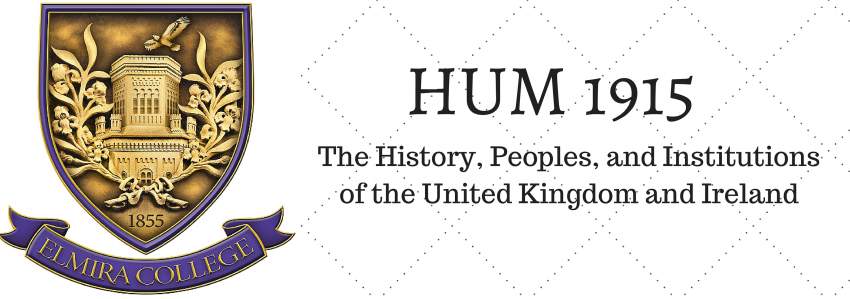- Trinity College & the Book of Kells
- Molly Malone Statue
- Chester Beatty Library
- Dublin Castle - State Apartments
- National Museum of Ireland - Archaeology & Natural History
- National Gallery of Ireland
Professor Wolfe and her HUM 1915 class began the day with a trip to Trinity College.
The bell tower in the center of Liberty Square
Professor Wolfe tells the class facts about Trinity College.
Here we learned about the Book of Kells. The Book of Kells is an illuminated transcript of the Gospels. The book was written on vellum, paper made of calf skin, inscribed by pens made of swan and goose feathers. The illustrative pigments were blue, yellow, and green. These natural dyes were made from lapis luzili from woad plant, yellow arsenic sulfide, and green copper verdigris. Professor Wolfe and the class then continued to the Long Room in the main chamber of the Old Library at Trinity College where we were surrounded by 65 meters of books very and manuscripts very important to Ireland's history. A significant document held in this area is the Proclamation of 1916. This document is important because in this is where Ireland declares their independence from English rule. It is a very exciting time for our class to be touring Ireland as it is the year of the 100th anniversary of the Irish rebellion.
Erika standing by the Proclamation of 1916
Group picture with Professor Wolfe in the Long Room
One our way to the Chester Beatty Library, we made a stop at the statue resurrected to memorialize the folk song about a lady fish monger in Dublin, who was popular with the men. A kind Irishmen serenaded us with the song as Professor Wolfe told us the history. The lyrics include:
"In Dublin's fair city, where the girls are so pretty
I first laid my eyes on sweet Molly MaloneAs she wheeled her wheel barrow
Through the streets broad and narrow
Crying cockles and mussels, alive, alive oh"
Our visit to Molly Malone and a kind Irish Couple
Next the class embarked on a self guided tour of the Chester Beatty Library. Expanding our view, this library contains a collection of manuscripts, paintings, and artifacts from many different areas of the world and their religions. We examined detailed Buddhist paintings, Chinese Dragon robes, Japanese Woodblock prints, and illuminated manuscripts from Islam, Christianity, Judaism, and many more. We concluded the tour with a delicious lunch based on the culture of the exhibits in the library's Silk Road Cafe with Professor Wolfe.
The ducklings follow in single file
The students take a quick break from looking at the manuscripts to color pages about the religions featured in the exhibits as a way to relax and digest all of the information they just took in.
Our travel class then had a packed afternoon starting at The Dublin Castle. Here the class marveled, at the beauty of St. Patrick's Hall, which is also one of the oldest rooms in the castle's state apartments.
Historically this room was used as a ballroom for the Viceregal Court, today it is used for Ireland's most important state events such as banquets for visiting dignitaries, and every 7 years the Irish president's inauguration takes place here as well. Our class was also impressed by the radiance of the Throne Room.
This room is at the heart of the apartments and was utilized as a welcoming place for visiting monarchs, as well as the presentation of debutantes. The grand throne itself was built for the welcoming of King George IV's visit to Ireland.
Pictured above: Emily O, Hannah, Erika, Sadie, Allie, Brittany, and Kate
A new piece of information that we learned in this museum was that the Celtic tribes used bogs to protect and offer their belongings. Because of the wet nature of the bogs, they knew that the land would consume their precious metal, wooden, and leather goods so that no one else could get to them, so they offered their goods to the land in self defense and for religious beliefs.
Brittany and Allie pose with a portion of a bog that has items from the Stone Age embedded into it.
We then continued our sightseeing for the day with a brief visit to the National Gallery. The exhibit we enjoyed the most was the European exhibit including artists such as Picasso and Monet.
Kaurin and Hannah examine paintings of Picasso and his fellow Hispanic painters.
We concluded our day of sightseeing by visiting the Natural Museum of Ireland: Natural History. At this museum the class saw many different mammals. insects, fish, and birds. It is said that the locals refer to this part of the National Museum as the "Dead Zoo."
Liz poses with a giraffe
Following our full day of museum viewings and walking, we had another traditional Irish pub dinner at O'Neill's. This common tourist attraction features a buffet of Irish classics and a musical performance every night.


No comments:
Post a Comment